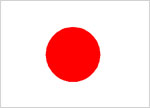Intervention fears weigh on yen
 The yen pulled back from a record high against the dollar on Monday on speculation that the Japanese authorities could move to weaken the currency.
The yen pulled back from a record high against the dollar on Monday on speculation that the Japanese authorities could move to weaken the currency.The yen hit a record high of ¥75.93 against the dollar on Friday as fears over global growth sparked haven demand for the Japanese currency and speculation of further quantitative easing from the Federal Reserve weighed on the greenback.
But the yen fell back on Monday after Yoshihiko Noda, Japan’s finance minister, signalled that Tokyo was prepared to take action to stem gains in its currency.
Mr. Noda said he saw the recent yen rise as more “one-sided” than before and that Tokyo would exchange information with other countries regarding currencies.
“We won’t rule out any measures and will take decisive action when necessary,” he said.
This sparked speculation that Japan might be considering returning to the market to sell the yen, following its largely unsuccessful attempt to weaken the currency on August 4.
Lee Hardman at Bank of Tokyo-Mitsubishi UFJ said another bout of unilateral intervention could occur in the near-term, although recent comments from Takehiko Nakao, Japan’s vice-finance minister, signalled that sustained intervention to guide the yen to a specific level remained off the table.
“Historically unilateral intervention has proved less effective than co-ordinated intervention. Unless there is a shift in economic fundamentals it is difficult to envisage the yen strengthening trend being derailed,” said Mr. Hardman.
“Downward pressure on the dollar against the yen should remain as it appears increasingly likely that the US economy will fall into recession heading into 2012.”
The yen fell 0.3 per cent to ¥76.76 against the dollar, lost 0.4 per cent to ¥110.61 against the euro and dropped 0.4 per cent to ¥126.49 against the pound.
Meanwhile, the dollar came under pressure as speculation grew that Ben Bernanke, Fed chairman, would use a speech in Jackson Hole, Wyoming, on Friday to announce a third round of quantitative easing, QE3, in an attempt to stop the US economy from falling back into recession.
“QE3 would probably lead to further dismay among foreign investors and selling of the dollar,” said Todd Elmer at Citigroup.
The dollar eased 0.1 per cent to $1.4402 (U.S.) against the euro, was 0.1 per cent weaker at $1.6475 against the pound and fell 0.3 per cent to $1.0434 against the Australian dollar.
Elsewhere, the Swiss franc lost ground on talk that the Swiss National Bank had intervened in the one-month forward market to try and drive down interest rates and weaken its currency.
The SNB has called the franc, which has been driven to record levels in recent weeks as investors have sought refuge from the euro zone debt crisis and fears over global growth, “massively overvalued” and has been using FX swaps to depress interest rates and flooding the money market with liquidity in efforts to deter investors from buying its currency.
The Swiss franc fell 0.3 per cent to SFr1.1342 against the euro and was 0.2 per cent weaker at SFr0.7872 against the dollar.
You can return to the main Market News page, or press the Back button on your browser.

